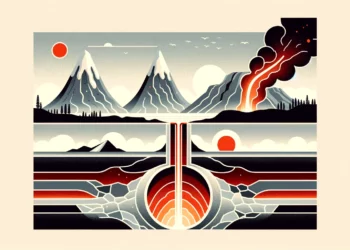A Yale University researcher claims that the so-called Goldilocks planetary area only tells half of the story – in order for a planet to have the necessary temperature to support life, the starting internal temperature also needs to be right.

In astronomy and astrobiology, the circumstellar habitable zone (CHZ), or simply the habitable zone, is the range of orbits around a star in which a planet can support liquid water, the fundamental condition for life as we know it. This habitable zone is colloquially called the ‘Goldilocks area’ as a metaphor from the beloved children’s fairy tale.
Since the concept was first presented in 1953, many planets have been shown to have a Goldilocks area, and some of them have one or several planets in this area. Naturally, distance from the star is the main factor. In our solar system, Venus is too close to the Sun, Mars is too far away, but Earth is at just the right distance.
Astronomers generally thought that a planet’s mantle might self-regulate the general temperature through convection (hot plumes are lighter, they rise towards the surface, they cool down, become heavier and sink again, creating a regulating mechanism). However, this might not be the case, and if this is not the case then the distance to the star isn’t the be-all end-all for temperature.
“If you assemble all kinds of scientific data on how Earth has evolved in the past few billion years and try to make sense out of them, you eventually realize that mantle convection is rather indifferent to the internal temperature,” said Jun Korenaga, author of the study and professor of geology and geophysics at Yale. Korenaga presents a general theoretical framework that explains the degree of self-regulation expected for mantle convection and suggests that self-regulation is unlikely for Earth-like planets.
The implications of this are huge, and might force us to tighten the leash on what we thought to be Earth-like planets.
“The lack of the self-regulating mechanism has enormous implications for planetary habitability,” Korenaga said. “Studies on planetary formation suggest that planets like Earth form by multiple giant impacts, and the outcome of this highly random process is known to be very diverse.”
The curious thing is that mantle convection does exist, at least on Earth. But Korenaga says that if our planet’s starting temperature wasn’t in the right range, this would have never happened.
“What we take for granted on this planet, such as oceans and continents, would not exist if the internal temperature of Earth had not been in a certain range, and this means that the beginning of Earth’s history cannot be too hot or too cold.”
The research was published in the journal Science Advances.






